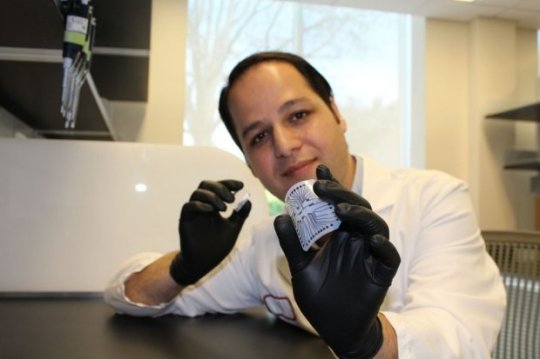At a manufacturing price of as little as 1 cent per chip, the novel technology could usher in a medical diagnostics revolution such as the type brought on by low-cost genome sequencing, says Ron Davis, Ph.D., lecturer of biochemistry and of genetics and director of the Stanford Genome Technology Centre.
A research illustrating the technology by the senior author Davis has been published in the Proceedings of the National Academy of Sciences. Another lead author is Rahim Esfandyarpour, Ph.D., an engineering research associate at the genome centre.
The cost-effective ‘lab on a chip’ technology has the ability to enhance diagnostic potentials around the world, particularly in developing nations. Due to the inferior access to early diagnostics, the rate of survival of breast cancer patients is just 40 percent in low-income countries – half the rate of such patients in developed countries. Other lethal ailments, like the tuberculosis, malaria and HIV, also have great incidence and bad patient outcomes in developing nations.
Better access to cheap diagnostics could aid alter this around, particularly as most such equipment costs thousands of dollars. “Allowing early identification of ailments is one of the biggest opportunities we have for developing effectual treatments.” says Esfandyrpour. “Maybe $1 in the U.S. does not count that much, but around the developing nations it means a lot of money.”

A combination of microfluidics, inkjet and electronics printing technology, the lab on a chip is a two-part system. The first is a clear silicone microfluidic chamber for housing cells and a reusable inkjet printer that can be employed to print the electronic strip onto a flexible polyester sheet employing commercially available conductive nanoparticle ink.
“We introduced it to eradicate the need for clean-room facilities and trained personnel to fabricate such a device,” says Esfandyarpour, an electrical engineer by training. One chip can be manufactured in around 20 minutes, he confirms.
Crafted as a multifunctional platform, one of its primary applications is that it enables users to analyse distinct cell types without employing fluorescent or magnetic labels that are usually required to track cells. Rather, the chip distinguishes cells based on their inherent electrical properties.
When an electric potential is applied across the inkjet printer strip, cells loaded into the microfluidic chamber get pulled in distinct directions depending on their ‘polarizability’ in a procedure called as dielectrophoresis. Such label-free method to analyse cells exceedingly enhances accuracy and reduced lengthy labelling procedures.
“The technology has the ability to not just advance health care, but also to boost basic and applied research. It would enable clinicians and scientists to potentially analyse more cells in shorter time spans, manipulate stem cells to accomplish efficient gene transfer and introduce cheap ways to diagnose ailments,” says Esfandyarpour. The group expects the chip will prepare a transformation in how people employ instruments in the lab
Filed Under: News


Questions related to this article?
👉Ask and discuss on Electro-Tech-Online.com and EDAboard.com forums.
Tell Us What You Think!!
You must be logged in to post a comment.